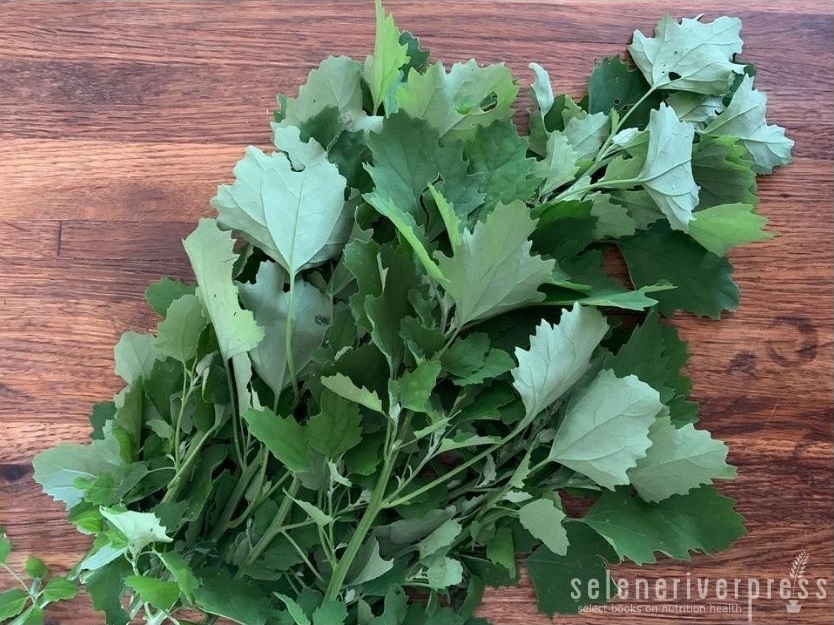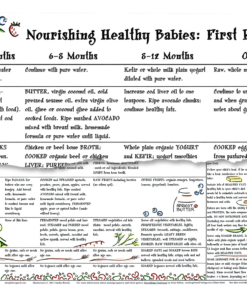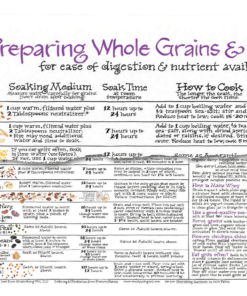What is a weed anyway?
A weed is defined as “a valueless plant growing wild.” (I am not sure that any plant is “valueless,” but that may be a conversation for another time.) Value aside, weeds are generally thought of as undesirable plants. That means they often happen to be in the wrong place, such as the middle of your cultivated garden.
That said, weeds are some of the most nutritious foods you can eat. Take the pesky dandelion, for example. As I write about in my blog post “Love Your Liver! Foods for Springtime,” dandelion is a powerful liver cleanser and diuretic. You can consume the leaves as a food, raw or cooked, and use both the roots and leaves as a tea. However, you must always take care to harvest any weeds you wish to consume from areas that have not been treated with pesticides, herbicides, or other chemicals.
Lambsquarters “Volunteered”
I was happy to see that one of my favorite edible weeds, lambsquarters (also known as pigweed, fat-hen, chou grass, frost-blite, mealweed, pitseed, goosefoot, white goosefoot, white pigweed, wild spinach, bacon weed, Muck Hill weed, melde, manure weed, or, in the Latin, Chenopodium album) decided to “volunteer” in and around my raised bed gardens this year. (Volunteers are those plants that just show up in your garden. You didn’t plant them—they volunteered.) While I was familiar with lambsquarters from living on the East Coast, this is the first year they appeared in my yard in northern Colorado. Yahoo! More greens for my table (and free at that). They have tender leaves (even more tender than spinach) and fairly “woody” stems. My 14-year-old likes it better than chard and spinach!
In addition to their tender leaves, lambsquarters are remarkably high in iron, calcium, B1, and B2—more than spinach and cabbage. The Maine Organic Farmer and Gardener touts lambsquarters as the “prince of wild greens,” noting that it “outclasses spinach as a storehouse of protein, calcium, phosphorus, iron, vitamin C, and great amounts of vitamin A, not to mention all the minerals pulled out of the earth by its strong taproot.”
Harvesting and Preparing Lambsquarters
At their most tender when young, it is best to harvest lambsquarters—which grow to over five feet—when the plants are less than a foot tall. To harvest them, you simply cut the main stem. If the plants are over a foot tall, leave the main stem intact and cut the branches off for their more tender leaves. (It is also a good idea to harvest before they go to seed, unless you want your whole yard or garden covered next year.)
If you will not be cooking them right away, store lambsquarters in a vegetable or plastic bag in the refrigerator for a few days. When ready to cook, rinse in cool water two or three times, or as long as it takes to wash the grayish powder from the leaves. (The plant derives part of its Latin name “album,” which means white or whiteness, from this powder.) I like to submerge the branches in a large bowl of cool water while moving them back and forth to clean them. Cut or break the young branches off the main stem, and chop the leaves as desired. (Compost the main stem as it is too woody to eat.) At this point, you may do one of several things:
- Wilt them. This is my favorite method. It is also the easiest way to maintain their tender goodness. In a sauté pan set over medium-low heat, wilt the lambsquarters lightly in just a bit of water for a few minutes. Add a pinch of sea salt and freshly ground pepper, then drizzle with extra virgin olive oil. Serve with either a splash of citrus (lemon or grapefruit work well) or your favorite raw vinegar (such as apple cider, red wine, or white
- Sauté them. Use a healthy fat, such as duck fat, coconut oil, or sesame oil, along with some garlic. This will not take long—just sauté a few minutes as the greens are already so tender. Add a bit of sea salt and freshly ground pepper and follow with a splash of acid (see suggestions below).
- Swap them. Use in place of any tender green such as spinach: toss raw into a salad, or drop into a bowl of soup or stew just before serving
Serve with a Splash!
Deep leafy greens love acid. Immediately before serving, splash a bit on to brighten the taste and bring out the flavor. Consider vinegar of any kind—raw if you can get it. (I particularly love balsamic vinegar on my greens.) Any citrus would work, as well as non-GMO tamari or soy sauce. Even beet kvass is delicious! (For more information about beet kvass, including what it is and how to make it, see the lacto-fermentation section in my book, The Complete Cooking Techniques for the GAPS Diet.)
Enjoy!
Image from Monica Corrado.




